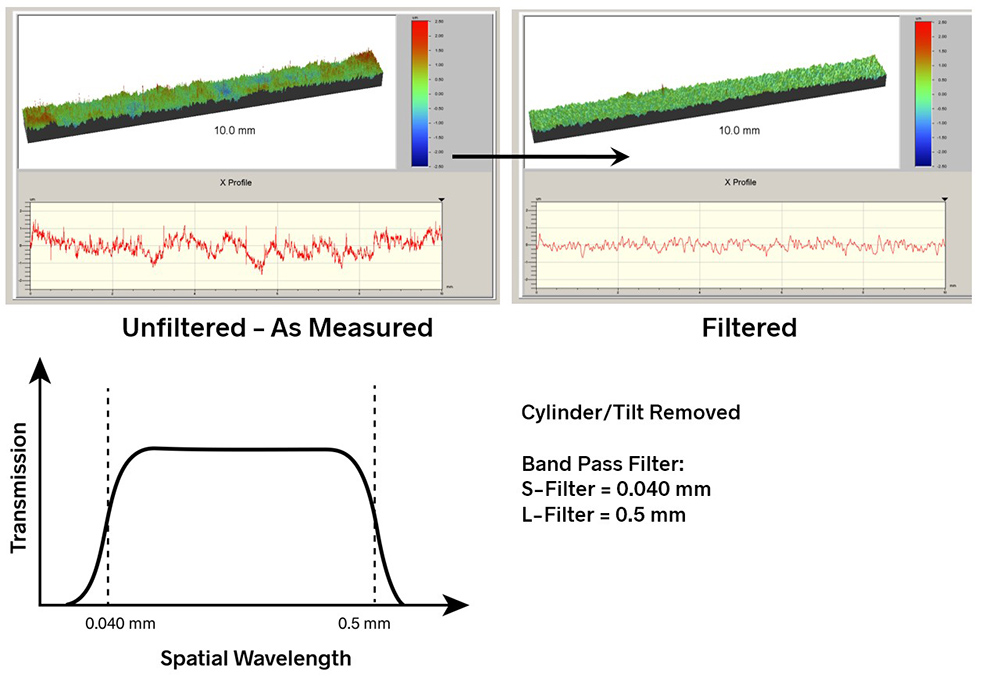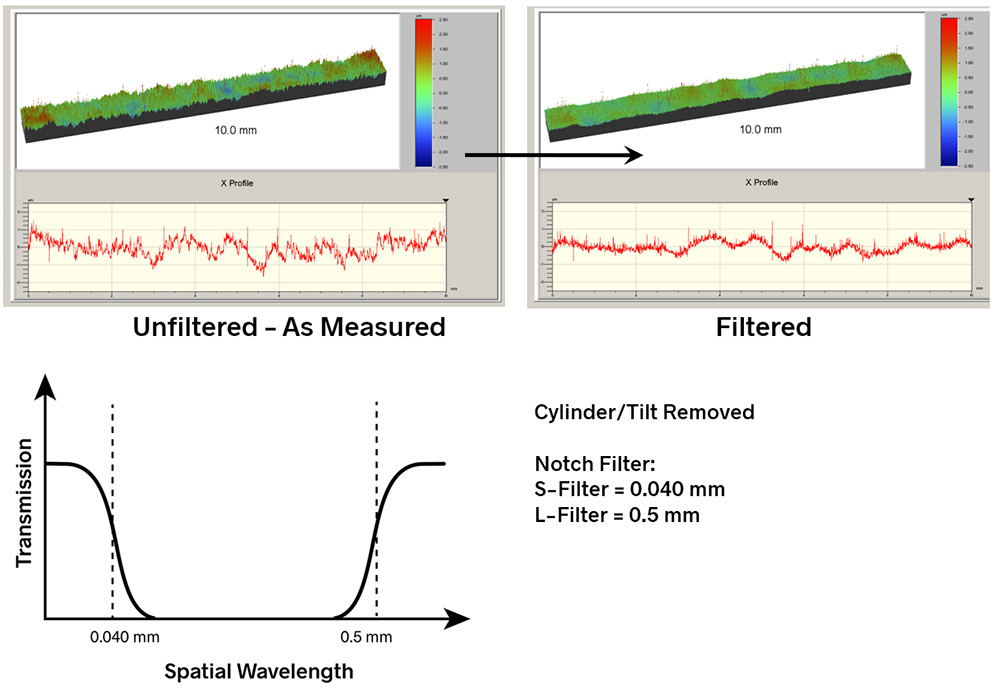It’s a regular refrain on this blog: surface texture consists of a spectrum of spatial wavelengths, ranging from shorter spatial-wavelength roughness through longer spatial-wavelength waviness and form.
Through the process of filtering, we divide the spatial wavelengths into what we will call roughness, waviness, and form for a particular application. Filters are applied at specified cutoff wavelengths which allow data either above or below the cutoff wavelength to pass, while rejecting the wavelengths on the other side of the filter. Such filter cutoffs are “single-sided” since they pass data above or below the filter.
Filters, however, can also be used in pairs. We may, for example, apply one filter to pass the spatial wavelengths above, say, 0.040 mm. Then we may apply a second filter to pass only wavelengths below 0.5 mm. The two filters together act as a “bandpass filter,” passing only the spatial wavelengths between 0.040 and 0.5 mm, as in the image below.

Conversely, if we apply one filter to pass the spatial wavelengths below 0.040 m. and the other to pass above 0.5 mm, we will end up with everything except a band of spatial wavelengths. This is a “notch filter.”
A bandpass filter might be useful in an application where waviness is critical to performance. On a painted surface, for instance, a narrow band of spatial wavelengths may produce “orange peel” rippling in the finish. As a manufacturer, you may need to isolate, quantify, and control these particular wavelengths. Or, you may want just the opposite: you’d like to notch out that orange peel wavelength band that dominates the measurement data in order to see what is happening at shorter spatial wavelengths (which may lead to a hazy finish). Notching out the dominant band emphasizes the other spatial wavelengths in the data, as in the example below.

The range of filtering options in most surface texture software makes it possible to highlight the important aspects of texture for a given application. However (and this is another constant refrain!): it is absolutely critical to specify and convey the types of filters and the cutoff wavelengths that should be used for any crucial measurement. Changes in these filter settings are very likely to change the measured results, often dramatically!
You can find out more about the various kinds of filters in the Filtering module of our Surface Texture and Tribology short course. All course modules are available on udemy.com.
